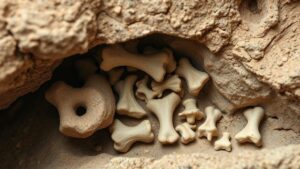Recognizing Hidden Treasure Coordinates Encoded in Numerical Series
Recognizing Hidden Treasure Coordinates Encoded in Numerical Series
The advent of technology has transformed the way we approach problem-solving across various disciplines, including treasure hunting and data analysis. This article delves into the intriguing world of recognizing hidden treasure coordinates encoded in numerical series, utilizing mathematical principles, pattern recognition, and analytical approaches. By exploring these concepts, we can understand how numerical patterns can lead to the discovery of significant geographic locations.
Understanding Numerical Series
Numerical series are sequences of numbers that follow a specific pattern or rule. can be simple, such as arithmetic sequences (where each term is derived by adding a constant) or geometric sequences (where each term is found by multiplying a constant). More complex series may also exhibit irregular patterns. Recognizing these patterns often plays a key role in decoding hidden messages, including coordinates.
For example, the Fibonacci sequence, a famous series where each number is the sum of the two preceding ones, often appears in natural forms around us and can provide insights when seeking locations. sequence begins as follows: 0, 1, 1, 2, 3, 5, 8, 13, etc. In treasure hunting, if a series represents the geographic latitude and longitude values encoded by an individual, understanding how to interpret this sequence is crucial.
Mathematical Principles for Extraction
To decipher encoded treasure coordinates, several mathematical tools are employed. The process involves the identification of patterns followed by the application of mathematical transformations such as:
- Pattern Recognition: Identifying repeating sequences or progressively decreasing/increasing values.
- Modular Arithmetic: A technique to handle cyclic patterns where numbers repeat in a fixed system.
- Transformations: Applying functions (e.g., sine, cosine) to uncover underlying structures in the numerical series.
For example, if the encoded series yields the pattern 10, 20, 30, …, it may signal that each ten units reflect a particular encoded coordinate, suggesting a linear path leading to potential treasures.
Real-world Applications and Case Studies
Numerous real-world applications exist where numerical series have led treasure hunters to discover invaluable findings.
One notable example is the discovery of ancient artifacts connected to lost civilizations. Archaeologists used recorded numerical patterns from ancient texts, which, when translated, provided coordinates that aligned perfectly with excavation sites. In this case, decoders utilized sequences derived from historical records to predict regions of interest.
Plus, in digital treasure hunts related to cryptocurrency, encoded numerical series help users decrypt hidden wallets or access private keys. By identifying the pattern within the numerical series provided, users can reclaim assets which may have historical or monetary value.
Challenges in Deciphering Coordinates
While recognizing hidden treasure coordinates encoded in numerical series can be immensely rewarding, challenges are inherent in the process. Common obstacles include:
- Ambiguity in Patterns: Many sequences can appear similar, making it difficult to pinpoint the exact encoding method.
- Data Integrity: Compromised data or erroneous inputs can lead to false leads during analysis.
- Complexity of Algorithms: Advanced mathematical algorithms may be required to decode intricate patterns, posing accessibility issues for novice treasure hunters.
Each challenge illustrates the necessity for a blend of analytical skills and innate curiosity. With advancements in technology, analytic tools for decoding such series have become more accessible, urging budding treasure hunters to engage with numerical mysteries actively.
Actionable Takeaways
The pursuit of hidden treasures encoded within numerical series is a multidimensional endeavor that combines mathematical acuity with historical context. To engage with this field effectively, individuals should:
- Strengthen their mathematical foundation, focusing on sequences and series.
- Use data analysis tools and software to interpret numerical patterns efficiently.
- Study historical texts and archaeological findings for context that may aid in decoding.
- Collaborate with mathematicians or data scientists to broaden their understanding of complex algorithms.
Through a structured approach that fuses skill and strategy, treasure hunters can enhance their ability to recognize hidden coordinates encoded in numerical series, paving the way for successful discoveries.



